April 2, 2011 NYQS at Three Jewels
Present:
Members:
Peiyou Chang
Stephen Dydo
Matthew Flannery
Rebecca Flannery
Yuni Han
Ralph Knag
Peter Reis
Yeh Shihhua
Participating Visitors:
Glenn Swann
Jennie Bai
Other Visitors:
About 30 other people came.
This was our first meeting at the Three Jewels Community Center, a loft near Union
Square which has programs focusing on Tibetan Buddhism, meditation and yoga. The
evening was a relaxed concert event. There were presentations by Stephen, Shihhua,
Peiyou, Glenn and Jennie.
Stephen Dydo 戴德
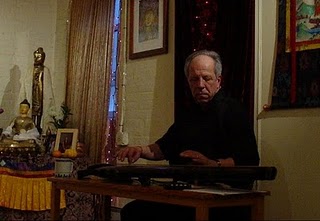
Stephen spoke first. He gave an introduction to the special music and culture of the
qin, mentioning that the music is even in China quite esoteric, and unusual for its
very meditative qualities. He then played two pieces. The first was普庵咒Pu An Zhou
(“Mantra of Pu An”), which he described as being special for its Buddhist focus. The
second was孔子讀易Kongzi Du Yi (“Confucius Reads the Book of Changes”). This was
transmitted by Zeng Chengwei, who is of the Sichuan Shu school. It is a depiction of the
struggles even the great master Confucius had with the enigmatic text.
To listen Stephen's opening talk, please click here.
To listen Stephen's playing of Pu An Zhou, please click here .
To listen Stephen's playing of Kongzi Du Yi, please click here .
Yeh Shihhua 葉時華
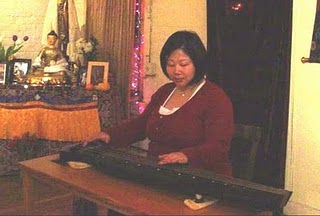
Judy (Shihhua) played two pieces. The first was 長門怨 Changmen Yuan (“Lament at
Changmen Palace”), with Jennie Bai’s help of translation, she described the story was base
on the Han dynasty, between Emperor Wu and his Empress - Chen Jiao. She also explained
how the musical form changed in each period which displayed the inner sentiment of Empress
Chen. The second piece was 欸乃 Ao ai (Boat-worker’s chant). This piece showed the
vitality and strength of workers, also helpless of their life. Judy explained the piece first and
demonstrated the parts where workers pull the boat and shouted together before she played the
whole piece.
To listen Shih-hua's playing of Changmen Yuan, please click here.
To listen Shih-hua's playing of Ao Ai, please click here .
Glenn Swann
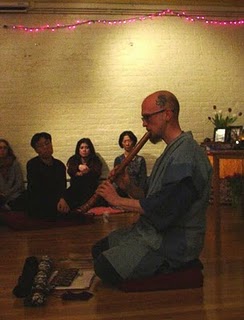
Glenn Swann played two solo pieces representative of different types of
traditional "Honkyoku" or "Zen" shakuhachi music. The first was "Shika No Tone"
(Distant Sound of Deer) a Kinko School piece.The second was "Horai", a Meian School
piece depicting Mt. Horai (Chinese P'eng Lai), a place where immortals where said to
dwell. The final piece was what is said to be the oldest shakuhachi piece, the Meian
School "Kyorei" (Empty bell), played this time as a duet with Peiyou Chang on guqin.
Peiyou Chang 張培幼
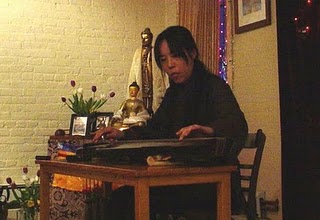
Peiyou played Mei-hua San-nong 梅花三弄 to convey her best wishes to the Japanese people and hope that Japan can be as strong as Plum Blossom
that no matter how hard the life environment is, they will still survive and still bloom and dance in the wind.
The 2nd piece Peiyou played was Yi Gu Ren 憶故人. The theme of this piece is the longing for familiar things or persons or having memories
of the past yet with no one to tell. Therefore thinking of an old friend and wanting to tell but being unable to reach the friend.
It is a very emotional qin piece which has the impression of feelings of longing.
Jennie Bai 白潔

Jennie, a new player, performed a version of陽關三疊 Yanguan sandie (Thrice Parting at
YangGuan) that she had taught herself. This is often played as a setting of a poem by the
Tang dynasty scholar Wang Wei, and is sung with the qin.
Glenn Swann and Peiyou Chang
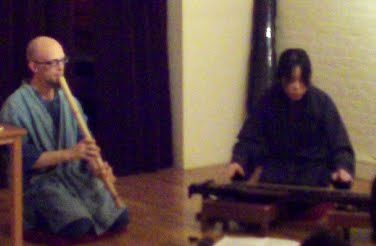
The meeting ended with Glenn and Peiyou's duet of Kyorei(虛鈴) which was arranged by Peiyou. To listen the sound recording of Kyorei, please click here.



